Today Current Affairs: 26th October 2021 for UPSC IAS exams, State PSC exams, SSC CGL, State SSC, RRB, Railways, Banking Exam & IBPS, etc
Table of Contents
RK Laxman: 100th Birth Anniversary
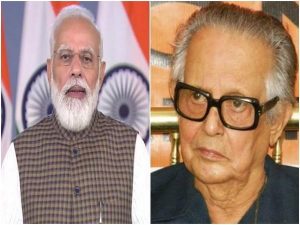
The Prime Minister, Shri Narendra Modi has paid tributes to cartoonist RK Laxman on his 100th birth anniversary.
- Rasipuram Krishnaswami Laxman (24 October 1921 – 26 January 2015) was an Indian cartoonist, illustrator, and humorist.
- The Common Man is a cartoon character created by Indian author and cartoonist R. K. Laxman.
- For over a half of a century, the Common Man has represented the hopes, aspirations, troubles and perhaps even foibles of the average Indian, through a daily comic strip.
- The comic was started in 1951.
- It became one of the most recognised feature on The Times of India the largest-circulation English language daily broadsheet newspaper in the world.
- Laxman also created a popular mascot for the Asian Paints Ltd group called “Gattu” in 1954.
- He was awarded Padma Vibhushan (2005) and Ramon Magsaysay Award for Journalism, Literature and Creative Communication Arts (1984).
International Solar Alliance (ISA): Fourth General Assembly

The fourth general assembly of the International Solar Alliance (ISA), was held virtually between October 18th and October 21st, 2021.
- It was presided by Union Minister Shri R.K. Singh, Minister for Power, New and Renewable Energy, Government of India and the President of the ISA Assembly.
- A total of 108 countries participated in the Assembly, including 74 Member Countries and 34 Observer & Prospective Countries, 23 Partner Organizations and 33 Special Invitee Organisations also participated.
- It was announced that ISA targets US$1 trillion of investment in solar by 2030, which would be significant in bringing the world closer to energy transitions needed.”
- Under the Modi-Johnson leadership, UK and India will together bring the ‘Green Girds Initiative’ and ‘One Sun, One World, One Grid’ at COP26. This is aimed at mobilizing the global technical, financial and research cooperation because it is only by working together that we will deliver the scale and pace of the clean power transition aim.”
- During the assembly, two new programmes were launched: Management of Solar PV panels & battery usage waste & Solar Hydrogen programme.
- The new Hydrogen initiative is aimed at enabling the use of solar electricity to produce hydrogen at a more affordable rate than what is available currently (USD 5 per KG), by bringing it down to USD 2 per KG.
- Aiming to synergize its efforts and actions with other similar initiatives globally, One Sun One World One Grid (OSOWOG) has joined hands with GGI to form a unified GGI-OSOWOG initiative, which aims to contribute to the collaborative, rapid development of resilient grids globally – building on continental, regional and national grid infrastructure programs.
- The International Solar Alliance (ISA) also announced a partnership with Bloomberg Philanthropies to mobilize $1 trillion in global investments for solar energy across ISA’s member countries.
- The two organizations will work with World Resources Institute (WRI) to develop a Solar Investment Action Agenda and a Solar Investment Roadmap, which will be launched at COP26.
Sustainability Of The Electricity Sector:
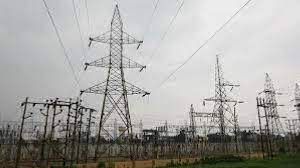
Ministry of Power notified rule for the sustainability of the electricity sector and promotion of clean energy to meet the India’s commitment towards Climate Change.
- The following Rules notified by the Ministry of Power under Electricity Act, 2003 are in the interest of the electricity consumers and the stakeholders:
Electricity (Timely recovery of costs due to Change in Law) Rules, 2021. - Electricity (Promotion of generation from renewable sources of energy by addressing Must Run and other matters) Rules, 2021.
- Timely recovery of the costs due to change in law is very important as the investment in the power sector largely depends upon the timely payments. At present the pass through under change of law takes time.
- This impacts the viability of the sector and the developers get financially stressed. The Rules would help in creating investment friendly environment in the country.
Amended Technology Up-gradation Fund Scheme (ATUFS):

Union Minister of Textiles Piyush Goyal reviewed the Amended Technology Up-gradation Fund Scheme (ATUFS) to boost the Indian textile industry by enabling the ease of doing business, bolstering exports and fuelling employment.
- Ministry of Textiles had introduced Technology Upgradation Fund Scheme (TUFS) in 1999 as a credit linked subsidy scheme intended for modernization and technology up-gradation of the Indian textile industry, promoting ease of doing business, generating employment and promoting exports. Since then, the scheme has been implemented in different versions.
- The ongoing ATUFS has been approved in 2016 and implemented through web based iTUFS platform. Capital Investment Subsidy is provided to benchmarked machinery installed by the industry after physical verification.
- ATUFS was approved for a period from 2015-16 to 2021-22 with an allocation of Rs. 17,822 crore (Rs. 12,671 crore for committed liability of previous versions of TUFS & Rs. 5151 crore for new cases under ATUFS).
- The scheme is being administered with a two stage monitoring mechanism by Technical Advisory-cum-Monitoring Committee (TAMC) and Inter-Ministerial Steering Committee (IMSC). ATUFS is implemented through web based platform, iTUFS.
- Modifications carried out in scheme guidelines in 2018 and further streamlining of procedures have simplified the process for availing the subsidy under the scheme
- In 2019, IMSC decided to introduce physical verification of machinery and computation of subsidy before releasing committed liability under previous versions of scheme (MTUFS, RTUFS & RRTUFS).
7th Meeting Of BRICS Communications Ministers:
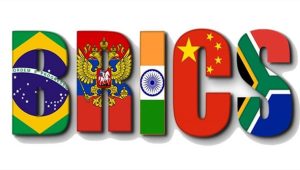
India as the current BRICS Chair convened the 7th Meeting of BRICS Communications Ministers on 22nd October 2021.
- Ministers adopted the Terms of References of Digital BRICS Task Force and supported the advancement in work of the BRICS Partnership on New Industrial Revolution (PartNIR) across several Working Groups meeting in 2021.
- Ministers also appreciated the discussion on the “360-degree approach on New Industrial Revolution” in a seminar during Working Group on ICTs Cooperation
- Ministers encouraged continuous cooperation in ICTs activities in international organizations and multilateral forums such as the International Telecommunications Union and other organizations.
- Ministers adopted the proposal to host the Digital BRICS Forum annually to facilitate sharing of information and knowledge, practices, initiatives, etc. on agreed cooperation areas.
52nd International Film Festival:
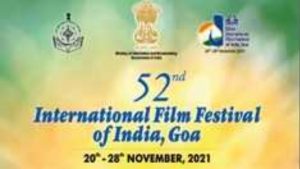
Union Minister for Information and Broadcasting Shri Anurag Thakur has announced that Mr. Istevan Szabo and Mr. Martin Scorsese will be conferred the Satyajit Ray Lifetime Achievement Award at 52nd International Film Festival of India in Goa.
- Istvan Szabo is one of the most critically acclaimed Hungarian film directors of the past few decades known for masterpieces like Mephisto (1981) Father (1966).
- Martin Scorsese is one of the major figures of the New Hollywood era, widely regarded as one of the greatest and most influential directors in film history. The 52nd edition of India’s most prestigious film festival will be held from 20th to 28th November, 2021 in Goa.
- The Minister informed that for the first time ever, IFFI has invited major OTT players to participate at the Festival. In a first, Netflix, Amazon Prime, Zee5, Voot and Sony Liv will participate at the Film Festival through exclusive Masterclasses, content launches and previews, curated film package screenings, and various other on-ground and virtual events.
- BRICS Film Festival: Shri Thakur also announced that for the first time ever, films from five BRICS nations will be showcased through the BRICS Film Festival alongside IFFI. The five countries vizi.e. Brazil, Russia, South Africa, China and India are also the Focus Countries of the 52nd IFFI.
PM MITRA Parks:

The Ministry of Textiles has issued the Notification on 21 October 2021 for setting up of 7 PM MITRA Parks as announced in Union Budget for 2021-22 and approved by the Central Government.
- PM MITRA Parks is envisaged to help India in achieving the United Nations Sustainable Development Goal 9 (“Build resilient infrastructure, promote sustainable industrialization and foster innovation”).
- PM MITRA is inspired by the 5F vision of Hon’ble Prime Minister. The ‘5F’ Formula encompasses – Farm to fibre; fibre to factory; factory to fashion; fashion to foreign.
- The scheme is to develop integrated large scale and modern industrial infrastructure facility for entire value-chain of the textile industry. It will reduce logistics costs and improve competitiveness of Indian Textiles.
- The 7 PM Mega Integrated Textile Region and Apparel (PM MITRA) Parks will be setup at Greenfield / Brownfield sites located in different willing States. Proposals of State Governments having ready availability of contiguous and encumbrance-free land parcel of 1,000+ acres along with other textiles related facilities & ecosystem are welcome.
- For a Greenfield PM MITRA park, the GOI Development Capital Support will be 30% of the Project Cost, with a cap of ₹500 Cr.
- For Brownfield sites, after assessment, Development Capital Support @30% of project cost of balance infrastructure and other support facilities to be developed and restricted to a limit of Rs. 200 Crore.
- State Government supports will include provision of 1,000 Acre land for development of a world class industrial estate.
- Competitiveness Incentive Support (CIS) of ₹300 Crore will also be provided to each PM MITRA park for early establishment of textiles manufacturing units in PM MITRA Park.
- PM MITRA park will be developed by a Special Purpose Vehicle which will be owned by State Government and Government of India in a Public Private Partnership (PPP) Mode.
- The Master Developer will not only develop the Industrial Park but also maintain it during the concession period. Selection of this Master Developer will happen based on objective criteria developed jointly by State and Central Governments.
ABHYAS:
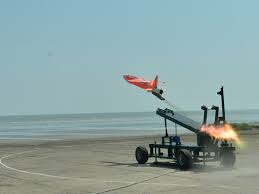
ABHYAS – the High-speed Expendable Aerial Target (HEAT) was successfully flight-tested by Defence Research and Development Organisation (DRDO) from the Integrated Test Range (ITR), Chandipur off the coast of Bay of Bengal in Odisha.
- The vehicle can be used as an aerial target for evaluation of various missile systems.
- The performance of the target aircraft was monitored through telemetry and various tracking sensors including Radars and Electro Optical Tracking System (EOTS).
- The current flight test is carried out as a part of developmental flight trials. Expression of interest for production of the vehicle has already been floated to Indian industries.
- This indigenous target aircraft, once developed, will meet the requirements of High-speed Expendable Aerial Targets (HEAT) for Indian Armed Forces.
- ABHYAS is designed & developed by DRDO’s Aeronautical Development Establishment (ADE), Bengaluru.
- The air vehicle is launched using twin under-slung boosters which provide the initial acceleration to the vehicle.
- It is powered by a gas turbine engine to sustain a long endurance flight at subsonic speed.
China-Pakistan Economic Corridor (CPEC):

The chief of the China-Pakistan Economic Corridor (CPEC) Authority has accused the U.S. of sabotaging the multi-billion dollar project, the economic lifeline of Pakistan.
- Pakistan is the seventh largest recipient of Chinese overseas development financing with 71 projects worth $27.3 billion under way as part of the CPEC.
- CPEC launched in 2015, the CPEC is the flagship project of the multi-billion-dollar Belt and Road Initiative (BRI), a pet project of Chinese President Xi Jinping, aimed at enhancing Beijing’s influence around the world through China-funded infrastructure projects.
- The 3,000 km-long China–Pakistan Economic Corridor (CPEC) consists of highways, railways, and pipelines.
- CPEC eventually aims at linking the city of Gwadar in South Western Pakistan to China’s North Western region Xinjiang through a vast network of highways and railways.
- The proposed project will be financed by heavily-subsidised loans, that will be disbursed to the Government of Pakistan by Chinese banks.
- It passes through PoK.
- CPEC rests on a Chinese plan to secure and shorten its supply lines through Gwadar with an enhanced presence in the Indian Ocean. Hence, it is widely believed that upon CPEC’s fruition, an extensive Chinese presence will undermine India’s influence in the Indian Ocean.
- It is also being contended that if CPEC were to successfully transform the Pakistan economy that could be a “red rag” for India which will remain at the receiving end of a wealthier and stronger Pakistan.
- Besides, India shares a great deal of trust deficit with China and Pakistan and has a history of conflict with both. As a result, even though suggestions to re-approach the project pragmatically have been made, no advocate has overruled the principle strands of contention that continue to mar India’s equations with China and Pakistan.
International Snow Leopard Day:

Oct 23 is recognised as International Snow Leopard Day
- The day came into being with the adoption of the Bishkek Declaration by 12 countries on the conservation of snow leopards.
Snow Leopard:
- Scientific name: Panthera uncia.
- Habitat: Snow leopards live in the mountains of Central Asia.
- Numbers: There are only between 3,920 and 6,390 snow leopards left in the wild.
- Range extends through twelve countries: Afghanistan, Bhutan, China, India, Kazakhstan, Kyrgyzstan, Mongolia, Nepal, Pakistan, Russia, Tajikistan, and Uzbekistan.
- Conservation Status: Snow leopards were considered endangered species until 2017 but the status was changed to vulnerable later in the year.
- As per reports, India is home to about 450-500 snow leopards which can be spotted in the upper Himalayan regions of the country.
National Fund To Control Drug Abuse:

The Social Justice and Empowerment Ministry has recently recommended that the National Fund to Control Drug Abuse be used to carry out de-addiction programmes, rather than just policing activities
National Fund to Control Drug Abuse:
- It was created in accordance with a provision of the Narcotic Drugs and Psychotropic Substances Act, 1985.
- It had a nominal corpus of ₹23 crore.
- Funding: Under the NDPS Act, the sale proceeds of any property forfeited, grants made by any person and institution, and income from the investments of the fund, go towards the fund.
- Usage of the fund: The Act states that the fund would be used to combat illicit trafficking of narcotics, rehabilitating addicts, and preventing drug abuse.
- Around 275 million people used drugs globally in the last year. Over 36 million people suffered from drug use disorders.
- Rise in the use of cannabis during the pandemic has been reported by most countries.
- Non-medical use of pharmaceutical drugs has also been observed in the same period.
- The latest global estimates say, about 5.5 per cent of the population between 15 and 64 years have used drugs at least once in the past year.
- Over 11 million people globally are estimated to inject drugs – half of them have Hepatitis C.
- Opioids continue to account for the largest burden of disease-linked to drug abuse.
Drug abuse cases and numbers in India:
- According to the National Crime Records Bureau’s Crime in India 2020 report, a total of 59,806 cases were lodged under NDPS Act.
In 2019, there were 3.1 crore cannabis users and 2.3 crore opioid users.
Mauritius Out Of Its Grey List: FATF

The Financial Action Task Force (FATF) has moved Mauritius out of its grey list.
- Mauritius has strengthened the effectiveness of its anti-money laundering and terror financing process, and has addressed related technical deficiencies to meet the commitments in its action plan regarding the strategic deficiencies that the FATF identified in February 2020.
- For several years, there have been apprehensions about Mauritius being a money laundering route for FPIs due to its limited regulatory oversight.
- The move would enable Indian non-banking and other financial services companies to receive foreign direct investment from funds and vehicles incorporated by international investors in Mauritius.
- This may indirectly lead to higher investment to India from the Island nation.
- It is also expected that now there would be less scrutiny by custodian banks on the ‘beneficial ownership’ (BO) of Mauritius vehicles coming in as FPI and FDI.




